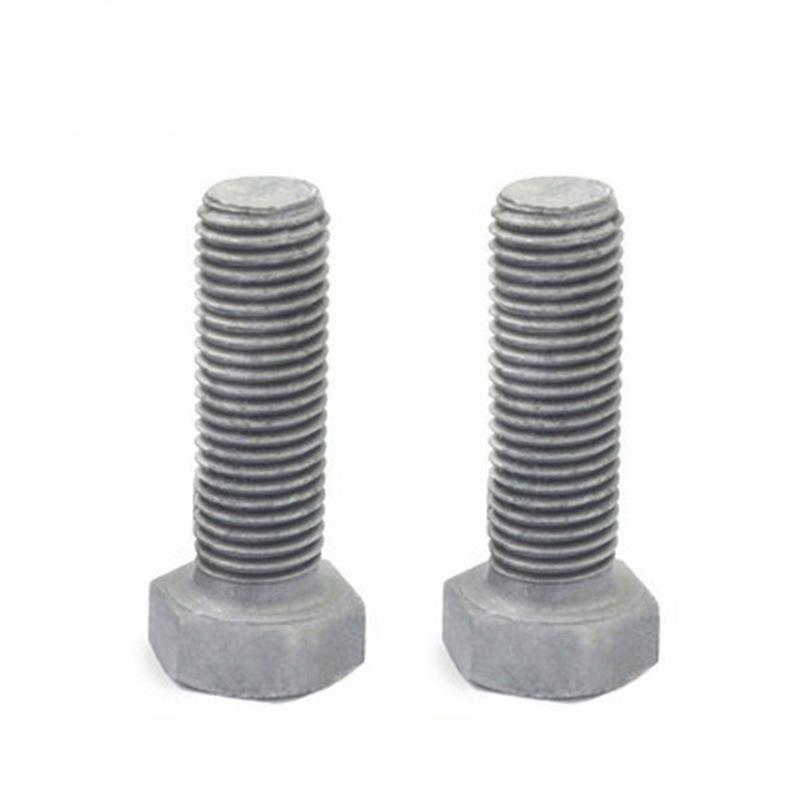

m10 x 1.25 flange lock nut
Nov . 25, 2024 19:19 Back to list
m10 x 1.25 flange lock nut
Understanding M10 1.25 Flange Lock Nuts A Comprehensive Guide
When it comes to mechanical assembly, choosing the right fasteners is crucial for ensuring stability and safety. Among various options, the M10 1.25 flange lock nut stands out for its design and functionality. This article will delve into the characteristics, advantages, applications, and installation practices of M10 1.25 flange lock nuts.
What is an M10 1.25 Flange Lock Nut?
An M10 1.25 flange lock nut is a type of nut designed to resist loosening during operation. The M10 designation indicates that the nut is compatible with an M10 bolt, which has a nominal diameter of 10 millimeters. The 1.25 refers to the thread pitch, which is the distance from one thread crest to the next, measured in millimeters. In this case, 1.25 mm is a standard thread pitch for M10 bolts.
What sets the flange lock nut apart from standard nuts is its built-in flange, which acts as a washer. This flange distributes the load over a larger surface area, providing additional stability. Moreover, the design of the nut typically includes a serrated surface on the flange that grips the material, enhancing the nut's resistance to vibration and loosening.
Characteristics of M10 1.25 Flange Lock Nuts
1. Material Flange lock nuts are usually made from high-strength materials such as stainless steel, carbon steel, or alloy steel. The choice of material impacts the nut's strength, corrosion resistance, and overall durability.
2. Finish Many flange lock nuts feature various finishes, such as zinc plating or black oxide, which enhance corrosion resistance and aesthetics.
3. Load Distribution The flange increases the point of load distribution, thereby minimizing surface damage on the connected parts. This characteristic is particularly beneficial in applications where the mounting surface may be prone to deformation.
4. Ease of Use Flange lock nuts are easy to install and do not require a separate washer, making them a convenient option for many assembly tasks.
Advantages of Using M10 1.25 Flange Lock Nuts
1. Prevention of Loosening The primary advantage of a flange lock nut is its resistance to loosening under vibrational forces. This feature is essential in industries where machinery operates at high speeds or experiences regular movement.
2. Improved Load Management The broader base provided by the flange allows for better load management, reducing the risk of local stress concentrations that can lead to failure.
m10 x 1.25 flange lock nut

3. Versatility M10 1.25 flange lock nuts can be used in a diverse range of applications, from automotive to construction, machinery, and more. They are effective in both permanent and semi-permanent assemblies.
4. Cost-Effectiveness By combining the functions of a nut and washer, flange lock nuts can reduce the number of components needed, resulting in lower costs and simplified assembly processes.
Applications of M10 1.25 Flange Lock Nuts
Given their unique properties, M10 1.25 flange lock nuts are employed in numerous applications across various industries
- Automotive They are commonly used in vehicle assembly, including securing components like suspension systems and engine mounts. - Construction In structural applications, these nuts secure beams, brackets, and other critical connections. - Manufacturing Machinery that experiences frequent vibrations benefits from the reliability provided by flange lock nuts, ensuring operational efficiency and safety. - Electronics In certain cases, they are utilized in electronic devices to secure components without risking damage to sensitive parts.
Installation Tips
To achieve optimal performance from M10 1.25 flange lock nuts, consider the following installation tips
1. Ensure Clean Threads The threads on both the nut and bolt should be clean and free of debris to allow for proper engagement.
2. Proper Torque Use a torque wrench to tighten the nut to the appropriate specifications. Over-tightening can lead to thread stripping or material failure.
3. Check Alignment Make sure that the components being fastened are aligned properly, as uneven surfaces can lead to inadequate load distribution.
4. Regular Inspections Perform regular inspections of fastened joints in applications where vibration is prevalent to ensure continued reliability.
Conclusion
M10 1.25 flange lock nuts are an excellent choice for many applications requiring high performance and reliability. Their robust design, ease of installation, and effectiveness in preventing loosening make them invaluable in various industries. Understanding their characteristics and proper installation techniques will enhance the longevity and safety of your assemblies.
Latest news
-
High-Strength Hot Dip Galvanized Bolts - Hebei Longze | Corrosion Resistance, Customization
NewsJul.30,2025
-
Hot Dip Galvanized Bolts-Hebei Longze|Corrosion Resistance&High Strength
NewsJul.30,2025
-
High-Strength Hot-Dip Galvanized Bolts-Hebei Longze|Corrosion Resistance&High Strength
NewsJul.30,2025
-
Hot Dip Galvanized Bolts-Hebei Longze|Corrosion Resistance&High Strength
NewsJul.30,2025
-
Hot Dip Galvanized Bolts - Hebei Longze | Corrosion Resistance, High Strength
NewsJul.30,2025
-
High-Strength Hot Dip Galvanized Bolts-Hebei Longze|Corrosion Resistance, Grade 8.8
NewsJul.30,2025

